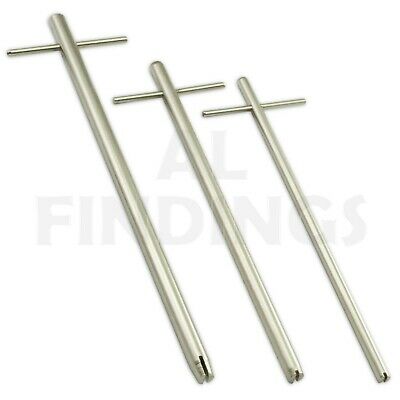-40%
WW1 MAP ZEPPELIN AIRSHIP RAID 2-3 Apr 1916 SCOTLAND EDINBURGH DOCKS LEITH
$ 63.87
- Description
- Size Guide
Description
This original map was printed in 1930 by Ordnance Survey (Date printed in lower right hand corner). It is one of a series of maps produced for "The War in the Air".The map shows the course taken of individual Airships and shows the location and time of any bombs dropped. Additionally there is a key to show the financial cost of any damage and the casualties recorded.
This Fold-Out map is in particularly good condition and looks to have had little or no use.
THIS LISTING IS FOR THE SINGLE MAP SHOWN
12 inches x 11 inches
****EXCELLENT CONDITION****
2nd/3rd Apr 1916
Kapitänleutnant Alois Böcker, commanding Zeppelin L.14, appeared off the Scottish coast at St. Abb’s Head at about 9.30pm. He followed the coast to the Firth of Forth but, unable to locate the naval docks at Rosyth, approached Leith at about 11.30pm, dropping nine high-explosive (HE) and 11 incendiary bombs. The first five (three HE and two incendiary) caused damage at the Edinburgh Dock and Albert Dock. The next bomb (HE) landed on a tenement at 2 Commercial Street where it destroyed part of the roof and top floor flat killing Robert Love, aged 66. Four incendiaries followed, falling in Commercial Street and Sandport Street. Then a catastrophe occurred that brought a tear to the eye of many a Scotsman – an HE bomb destroyed Innes & Grieve’s bonded warehouse. Further bombs set fire to two houses, in Church Street and Mill Lane, and a bomb that struck a court at 200 Bonnington Road killed 1-year-old David Robb. The final Leith bomb caused considerable damage at the Bonnington Tannery on Newhaven Road.
Now L.14 was over Edinburgh and began dropping the first of 24 bombs (17 HE and 7 incendiaries) on the Scottish capital. The first fell on vacant ground at Bellevue Terrace, behind East Claremont Street, causing minor local damage. Following a southward course across the city an incendiary fell in The Mount, between the castle and Waverley Station, followed moments later by an HE bomb that exploded on the roof of 39 Lauriston Place causing serious damage to it and number 41 – the School for Children with Skin Diseases - but the occupants escaped unhurt. About 80 yards away in Graham Street (now Keir Street), however, a portion of the same bomb cut down 27-year-old David Robertson who died in hospital of his injuries.
Continuing southwards, L.14 dropped bombs in the grounds of George Watson’s College, on The Meadows and on a tenement in Marchmont Crescent, but no one was injured, before turning eastwards. Bombs fell on Hatton Place, on a tenement at 183 Causewayside, injuring six people and causing a 74-year-old woman to have a fatal heart attack, and on Blacket Place. L.14 then turned back to the centre of the city, dropping an incendiary in the grounds of the Royal Infirmary followed by an HE bomb that exploded in Grassmarket outside the White Hart Hotel. This wrecked the interior, injuring four people of whom one, William Breakey, later died of his injuries. L.14 then followed a westerly course, dropping a bomb at the south-west corner of Castle Rock, then an HE bomb on the County Hotel in Lothian Road wrecking the upper two floors and adjoining buildings.
Over the Water of Leith, Böcker dropped three HE bombs as he turned back and flew across the city again, dropping an HE bomb with devastating effect on the pavement outside a tenement at 16 Marshall Street. A number of people were sheltering in the doorway; the blast killed six and injured seven, at least one of whom, Private Thomas Donoghue, later died. The next bomb fell on Haddon’s Court off Nicolson Street causing serious damage followed by one on 69 St Leonard’s Hill that wrecked the roof and top floor, killed 5-year-old Cora Bell, and injured her mother and younger sister. As L.14 departed she dropped four bombs in King’s Park and a final incendiary that landed in the grounds of Prestonfield House around 12.15am. Böcker and L.14 went back out to sea at about 1.00am over Cockburnspath.
Zeppelin L.22, commanded by Kapitänleutnant Martin Dietrich, came inland before L.14, crossing the coast a little to the north of Berwick-upon-Tweed at about 9.00pm. Dietrich believed he bombed a large factory in Newcastle but his 14 HE and 14 incendiary bombs fell in the countryside north-west of Berwick, landing near Lamberton Farm, close to the village of Chirnside and at East Blanerne Farm. None of these bombs caused any damage. Back out over the sea L.22 dropped another five HE bombs and then generally followed the coastline towards the Firth of Forth, coming inland at North Berwick and dropping a single incendiary bomb on golf links near Archerfield House near Dirleton. It seems that by the time L.22 approached Leith, L.14 was already bombing at a much lower height so Dietrich stood off. At 11.50pm, moving very slowly, he dropped an HE bomb at Slateford on the outskirts of Edinburgh, followed by another at Comiston at 12.15am and a third at Bridgend near Craigmiller five minutes later. At about 12.40pm Dietrich took L.22 back out to sea over the Firth of Forth near Portobello.
THIS LISTING IS FOR THE SINGLE MAP SHOWN
Please message with any questions regarding this item
v3 map case
Zeppelin L.22, commanded by Kapitänleutnant Martin Dietrich, came inland before L.14, crossing the coast a little to the north of Berwick-upon-Tweed at about 9.00pm. Dietrich believed he bombed a large factory in Newcastle but his 14 HE and 14 incendiary bombs fell in the countryside north-west of Berwick, landing near Lamberton Farm, close to the village of Chirnside and at East Blanerne Farm. None of these bombs caused any damage. Back out over the sea L.22 dropped another five HE bombs and then generally followed the coastline towards the Firth of Forth, coming inland at North Berwick and dropping a single incendiary bomb on golf links near Archerfield House near Dirleton. It seems that by the time L.22 approached Leith, L.14 was already bombing at a much lower height so Dietrich stood













